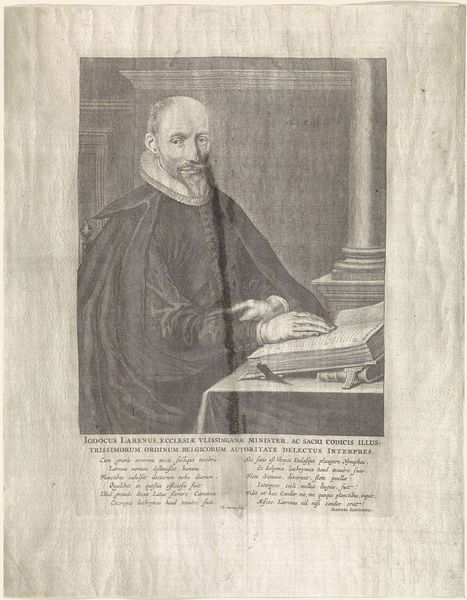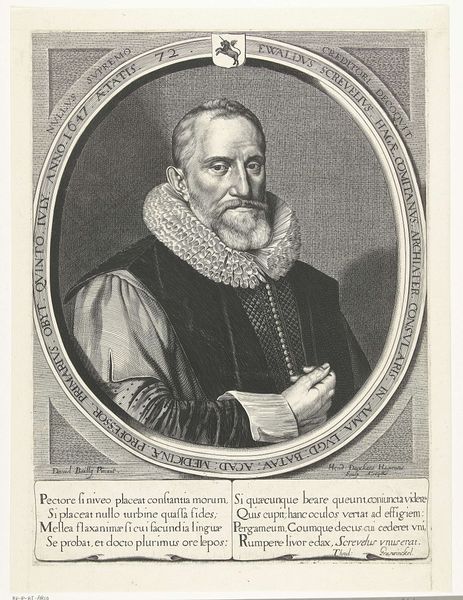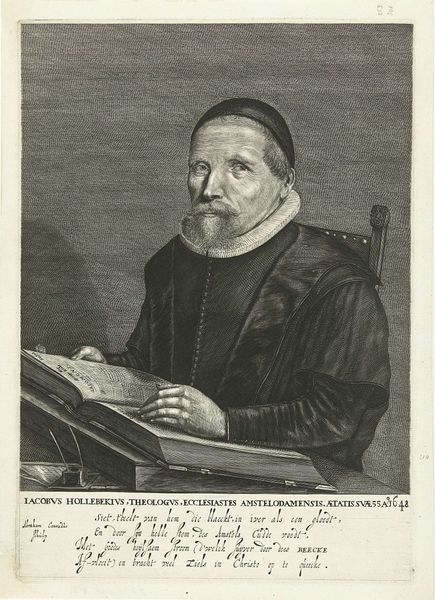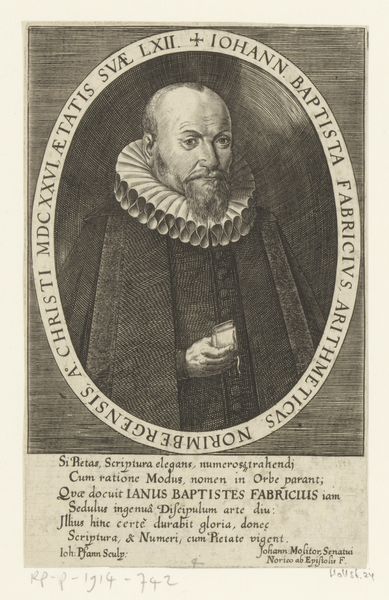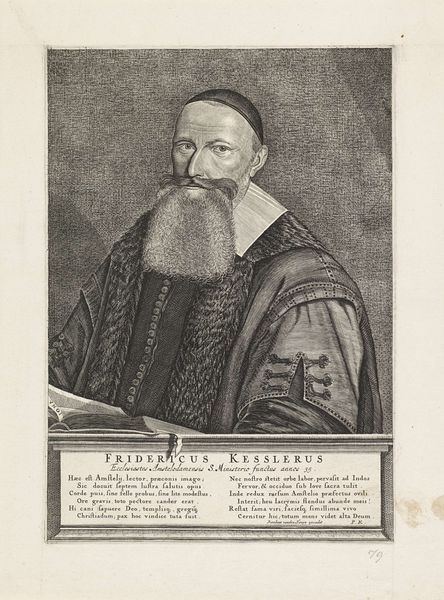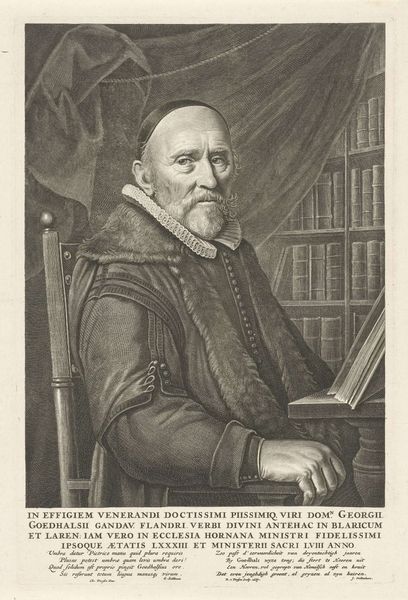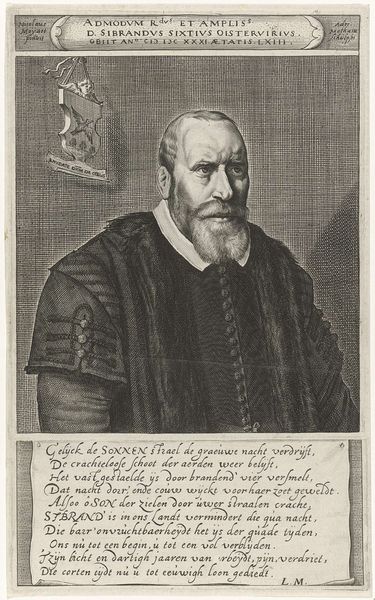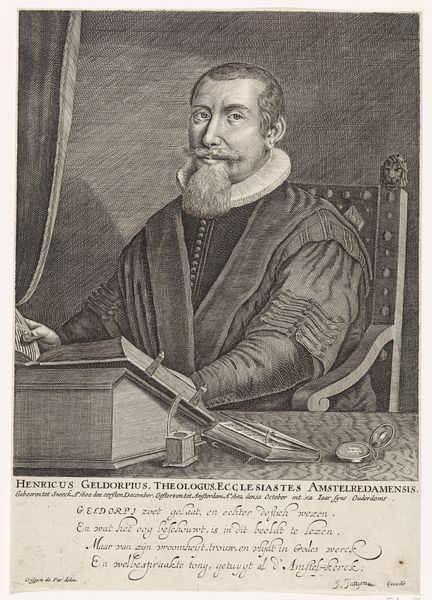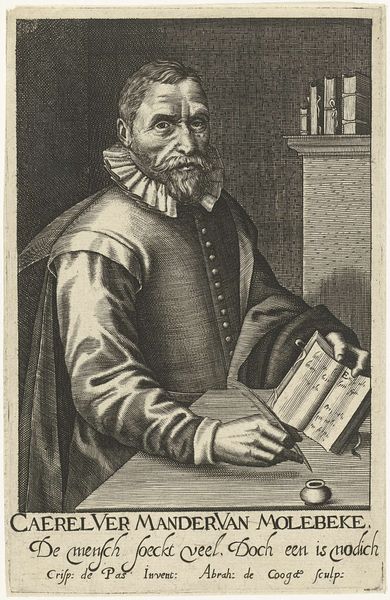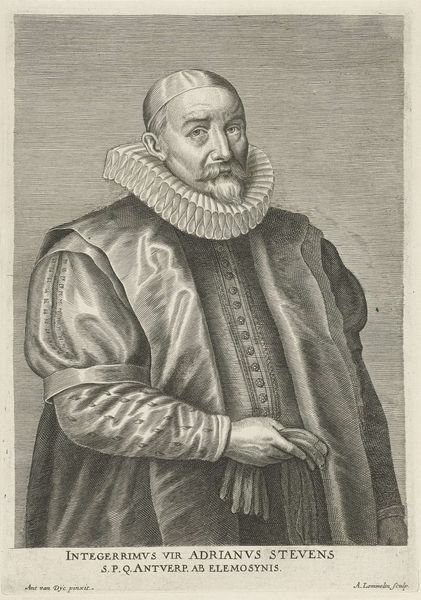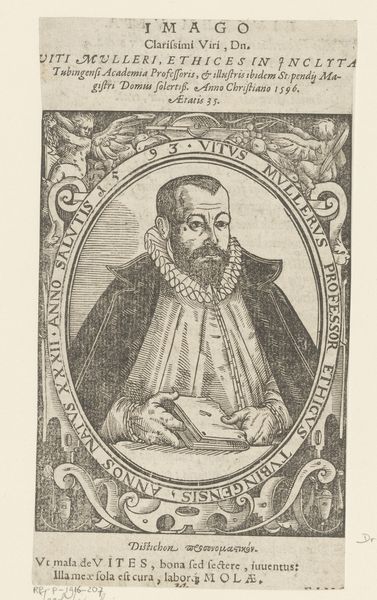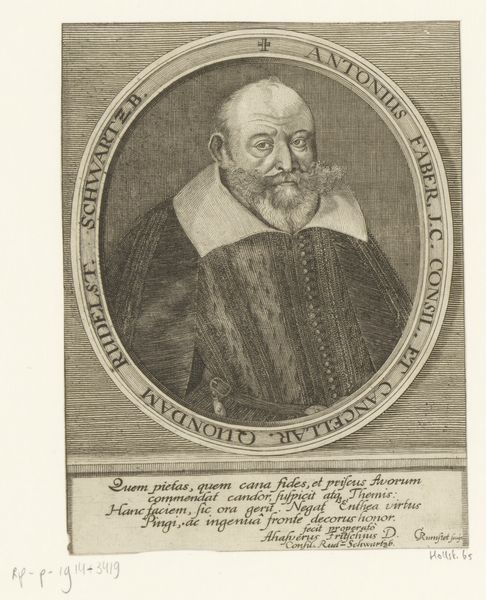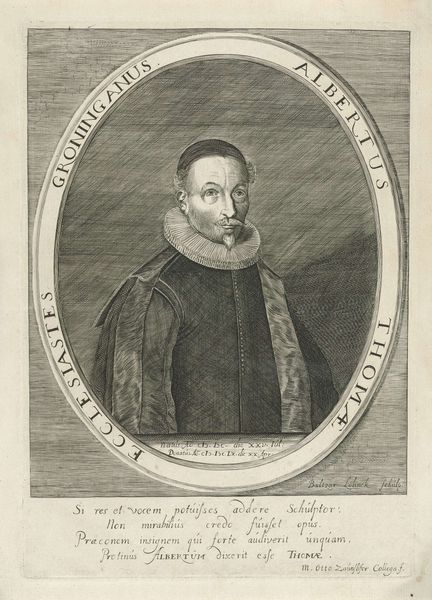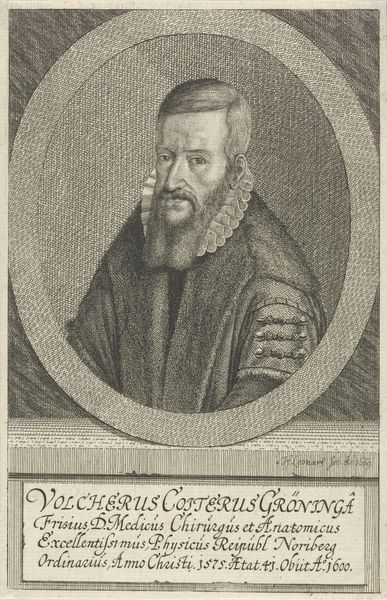
print, engraving
#
portrait
#
baroque
# print
#
portrait drawing
#
history-painting
#
engraving
#
portrait art
Dimensions: height 315 mm, width 220 mm
Copyright: Rijks Museum: Open Domain
This portrait of Joost van Laren was created by Theodor Matham, likely in the mid-17th century, using engraving. It's a printmaking process that demands incredible skill and labor. The image starts as a polished copper plate. Using a tool called a burin, the artist carves lines directly into the metal. These lines create grooves that will hold ink. The plate is then inked, and the surface carefully wiped clean, leaving ink only in the incised lines. Finally, dampened paper is laid on the plate, and run through a printing press under immense pressure. The paper is forced into the inked grooves, transferring the image. Look closely and you can see how Matham used varying depths and densities of lines to create tone and texture. The crispness of the lines, the subtle gradations of shadow – all speak to the artist’s mastery. It's important to remember that prints like this were not only works of art, but also a means of disseminating images and ideas. They were a crucial part of the early modern information economy, circulating knowledge and shaping public opinion. Appreciating the skill and labor involved in their production allows us to see these images in a new light.
Comments
No comments
Be the first to comment and join the conversation on the ultimate creative platform.
